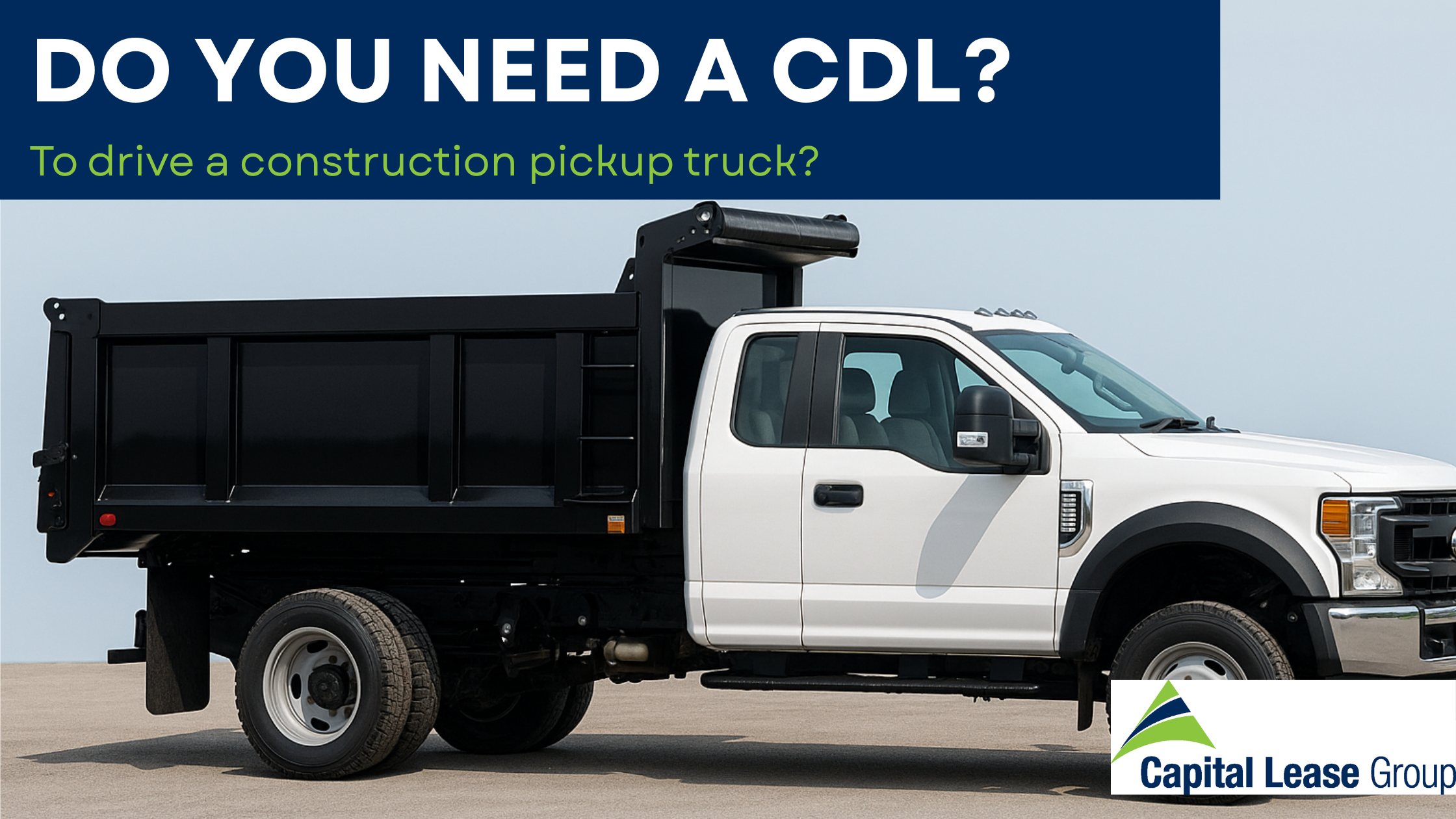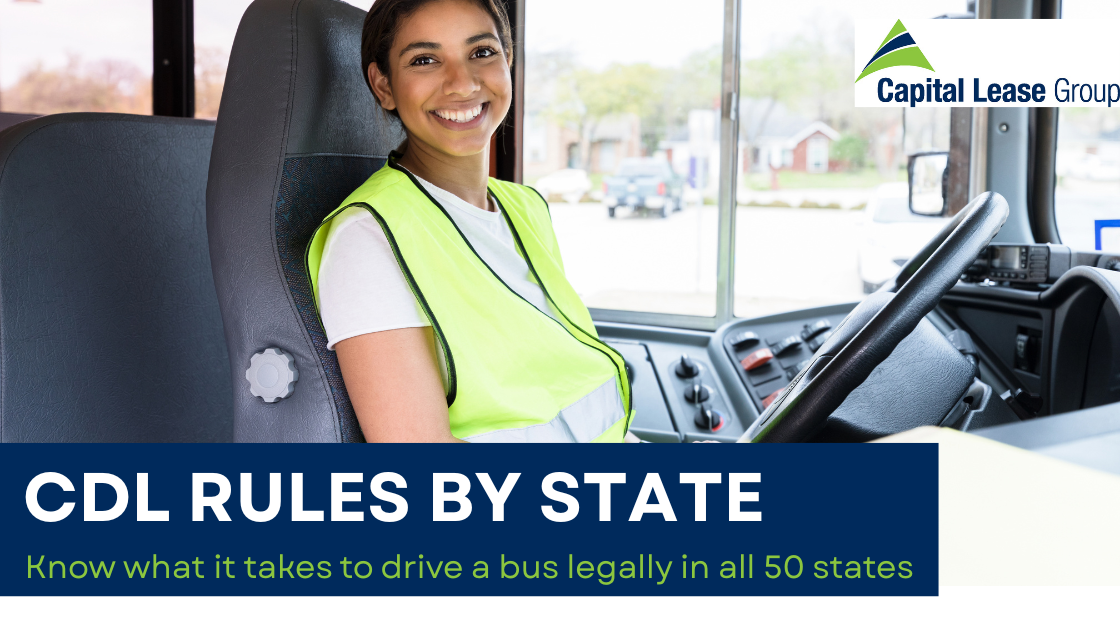Do You Need a CDL to Drive a Construction Pickup Truck?
If you operate a construction business, manage a vehicle fleet, or simply drive a heavy-duty pickup for work, you’ve probably wondered at some point: “Do I need a CDL for this truck?” It’s a simple question—but the answer isn’t always straightforward.
With so many truck models, trailer sizes, and evolving regulations around diesel and electric powertrains, it’s easy to make assumptions that could lead to expensive fines, insurance problems, or regulatory issues. That’s why we created this guide—to help clarify the rules around commercial driver’s license (CDL) requirements for pickup trucks commonly used in construction and heavy-duty applications.
Whether you’re outfitting a new work truck, expanding your fleet, or managing compliance across multiple job sites, understanding where the CDL line is drawn can help you:
- Stay compliant with transportation laws
- Avoid costly licensing mistakes
- Train and assign drivers appropriately
- Make informed decisions about truck and trailer purchases
Most pickup trucks like F-250s, 2500HDs, and similar models fall below these limits and do not require a CDL.
Understanding the Different CDL Classes in the United States
If you’re trying to determine what kind of commercial driver’s license (CDL) you or your team members need, it’s essential to understand the differences between Class A, Class B, and Class C licenses. Each class governs what types of vehicles and cargo you’re legally permitted to operate under U.S. Department of Transportation (DOT) regulations.
Class A CDL – For Combination Vehicles
A Class A CDL is required to operate any combination of vehicles with a gross combination weight rating (GCWR) of 26,001 lbs or more, provided that the towed unit has a GVWR of more than 10,000 lbs.
This license is typically required for:
- Tractor-trailers (semi-trucks)
- Pickup trucks towing large equipment or trailers
- Flatbed combinations
- Livestock or tank trailers
Learn more about Class A requirements from the FMCSA
Class B CDL – For Heavy Single Vehicles
A Class B CDL is for drivers operating a single vehicle with a GVWR of 26,001 lbs or more, or towing a vehicle with a GVWR of 10,000 lbs or less.
This license is typically required for:
- Dump trucks
- Box trucks or delivery trucks
- Straight trucks
- Municipal utility vehicles or plow trucks
Learn more about Class B requirements from the FMCSA
Class C CDL – For Hazmat and Passenger Vehicles
A Class C CDL is required to operate vehicles that do not fall under Class A or B but are:
- Designed to transport 16 or more passengers, including the driver
- Used to transport hazardous materials requiring placards
Common examples include:
- Shuttle vans or buses with 15 passengers plus driver
- Small school buses
- Fuel transport vehicles or chemical carriers
Learn more about Class C requirements from the FMCSA
CDL License Class Comparison
| CDL Class | Applies To | Example Vehicles |
|---|---|---|
| Class A | Combination vehicles over 26,001 lbs (towed unit over 10,000 lbs) | Semi-trucks, heavy-duty truck + trailer setups |
| Class B | Single vehicle over 26,001 lbs (towed unit under 10,001 lbs) | Dump trucks, box trucks, straight trucks |
| Class C | Vehicles carrying 16+ people (including driver) or hazmat | Shuttle vans, minibuses, fuel/chemical transport vehicles |
Each CDL class may also require additional endorsements, such as air brakes, passenger transport (P), school bus (S), or hazardous materials (H), depending on the vehicle type and cargo. Always verify with your state’s DMV or DOT for the latest CDL testing and renewal requirements.
Heavy-Duty Pickup Truck Comparison Chart
Below is a list of commonly used heavy-duty pickup trucks, including their class, weight ratings, engine types, and CDL status:
| Make | Model | Class | GVWR (lbs) | Engine/Notes | CDL Required? |
|---|---|---|---|---|---|
| Ford | F-150 Lightning | 2 | ~8,500 | All-electric, Max Trailer Tow Package available | ❌ No |
| Ford | F-250 Super Duty | 2 | ~9,900 | 6.7L HO Turbo Diesel, up to 500 hp | ❌ No |
| Ford | F-350 Super Duty | 3 | 11,000 – 14,000 | 6.7L HO Turbo Diesel available | ❌ No |
| Ford | F-450 Super Duty | 4 | 14,000 – 16,500 | Heavy-duty diesel, high towing | ✅ Possibly |
| Ford | F-550 Super Duty | 5 | 17,500 – 19,500 | Often used commercially | ✅ Often |
| Ram | 2500 | 2 | ~10,000 | Cummins diesel optional | ❌ No |
| Ram | 3500 | 3 | 11,000 – 14,000 | High towing, diesel option | ❌ No |
| Ram | 4500 | 4 | 14,000 – 16,500 | Cummins diesel, chassis cab | ✅ Possibly |
| Ram | 5500 | 5 | 17,500 – 19,500 | Common for fleet/commercial | ✅ Often |
| GMC | Sierra 2500HD | 2 | ~10,000 | 6.6L Duramax diesel optional | ❌ No |
| GMC | Sierra 3500HD | 3 | 11,000 – 14,000 | Duramax diesel, dual rear wheel available | ❌ No |
| GMC | Sierra HD (Municipal) | 4/5 | 14,000 – 19,500 | Plow/sander setups for municipalities | ✅ Possibly |
State-by-State CDL Requirements
While the federal CDL threshold is generally consistent across the U.S., individual states may have additional:
- Endorsement requirements (e.g., air brakes, hazmat)
- Vehicle inspection protocols
- Intrastate-only licenses for non-federal use
- Agricultural or municipal exemptions that vary by region
Some states are stricter about trailer GVWR combinations or require medical certifications more broadly. Always consult your state’s DMV website or commercial vehicle handbook for the latest and most accurate information.
Do You Need a CDL for a Pickup Truck with a Dump-Body?
Many contractors and fleet managers assume that as long as their dump-body pickup is under a certain weight, they’re in the clear—but that’s not always the case. If you’re hauling dirt, gravel, stone, or other materials, your truck may require a commercial driver’s license (CDL) based on its rated capacity, not just the actual load.
What You Need to Know:
- GVWR Is Key: The CDL threshold is based on the truck’s Gross Vehicle Weight Rating (GVWR)—not the actual weight you’re hauling.
- Over 26,001 lbs = CDL Territory: If your truck’s GVWR is 26,001 lbs or more, you need at least a Class B CDL to operate it—even when empty.
- Towing Changes the Rules: If you’re towing a trailer and the combined GVWR of truck and trailer exceeds 26,001 lbs and the trailer’s GVWR is over 10,000 lbs, a Class A CDL is required.
- Hazmat Loads: If the truck is transporting materials that require placards under DOT rules, you’ll need a Class C CDL with a Hazmat endorsement.
Example:
A Ford F-550 dump truck has a GVWR of approximately 19,500 lbs. If it’s loaded with 6,000 lbs of gravel, the actual weight may still be under 26,001 lbs. However, if that same truck is towing a trailer with a GVWR of 10,000 lbs, the combined GVWR hits 29,500 lbs—triggering the need for a Class A CDL.
Key takeaway: Always check the GVWR on the truck’s door sticker, factor in trailer GVWR if applicable, and verify your licensing needs before hitting the road. A misunderstanding here can result in fines, insurance issues, or downtime.
Final Checklist
- Check the truck’s GVWR (usually listed on the door jamb or vehicle plate)
- Add the trailer’s GVWR (if towing)
- Confirm whether the load includes hazardous materials
- Consult your state DOT/DMV for specific and current CDL laws
Understanding these requirements helps ensure your team stays safe, legal, and efficient on every job site.
——————————–
Disclaimer: This blog post was published on July 1, 2025, and the information provided is accurate to the best of our knowledge as of that date. CDL requirements are subject to change by individual state authorities. For the most current and official information, please refer to the state-specific links provided throughout this article.

